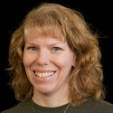Because I blog about educational travel, I was given admission tickets for most of the places I visited during our trip. This has no bearing on my reviews. Unless I say otherwise, everything I'm sharing is something that I recommend. If you notice any gaps in my narrative, it is because I didn't love a particular attraction enough to recommend it, regardless of how much I paid or didn't pay.
---------
Travel Adventures in Denver, Colorado
On Sunday, June 22 Steve and I flew from Sacramento to Denver. Most of the flight was uneventful, but we had about 15 minutes of turbulence during the approach into Denver. This is no surprise, considering Denver is North America's most turbulent airport. It was the side-to-side, vomit-inducing kind of turbulence (roll), not the plunging and jerking, fear-inducing kind of turbulence. I'd rather be nauseated than terrified, so I'm calling that a win, particularly since I didn't actually throw up.
We headed downtown and checked into our hotel, the beautiful Hyatt Regency. I highly recommend it if you find yourself in Denver. It's in a great location, offers wonderful amenities, and has spacious, clean, and comfortable rooms. After we dropped off our stuff, we headed across the street to the Convention Center so Steve could pick up his registration materials. It was fun to see a sign with Tux in hiking gear welcoming the OSS attendees!
The Colorado Music Hall of Fame is located in the Convention Center. You don't have to be an attendee to visit; as long as the building is unlocked, it's free and available to visit. Go!
John Denver is one of my all-time favorite musicians. He was part of the inaugural class of 2011, along with Red Rocks Amphitheater.
I enjoyed learning about all the inductees to Colorado's Music Hall of Fame.

After Steve got his badge, he took it to the customization table. He attached three flags: Embedded Linux, Zephyr, and We Are Hiring. Then he added a pronoun sticker (He/Him) from amongst five choices. Finally, he chose a green sticker to indicate that he is comfortable with people approaching him to talk. I appreciate the Linux Foundation's efforts to help all attendees have a positive experience at the Summit.


We dropped Steve's registration materials at the hotel and then headed out to complete the Denver Urban Adventure Quest. The Quest started at the beautiful Colorado State Capitol...

... where we found Colorado's Liberty Bell replica.
The Quest took us to many other points of interest in downtown Denver, including the Denver Art Museum, 16th Street, the Performing Arts Center (the second largest in the country behind Lincoln Center in New York), and the Brown Palace Hotel. Along the way, we were joined by Joseph, one of three others from Anodize besides Steve who attended the Summit. This was Joseph's first-ever Quest.
During the Quest, we saw some really cool public art. There are tons of murals, sculptures, and interactive art pieces throughout Denver.




As always, the Quest challenges were interesting, fun, and educational.


We'd planned to finish the Quest and then have dinner, but we were all starving, having eaten nothing all day but an airplane snack. So we paused the Quest (we love that feature!) and had a delicious dinner at Stout Street Social.
Can you guess whether I had the beet salad with pepitas, goat cheese, and blood orange vinaigrette...
... or the ahi tuna tower with eel sauce and crispy wontons? (If you can't guess, you don't know me AT ALL.)
Pleasantly full, we finished up the Quest and headed back to the Hyatt. Between the travel and the Quest and the time zone change, we were really tired.
It would be an early morning for Steve and the gang, but it would be a REALLY early morning for me. I'll tell you all about it tomorrow.



















.jpg)
.png)
